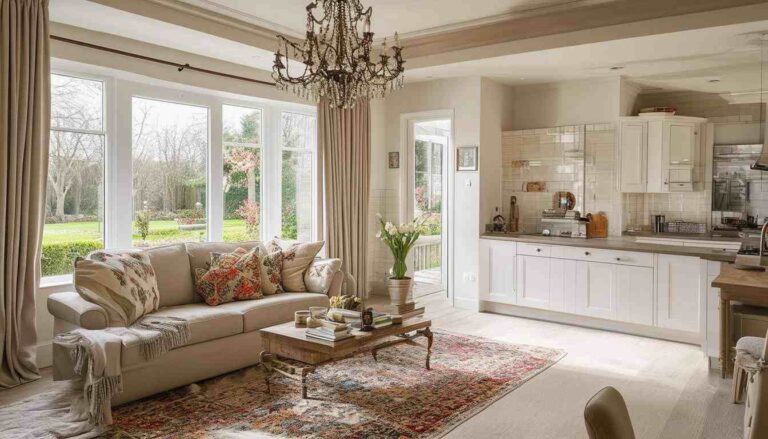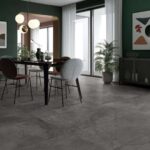You don’t necessarily need big renovation upgrades or expensive equipment to make your home more comfortable.
Sure, the influencer-curated videos or the aesthetically designed home reno magazines may have you believe so, but there are many small habits you can adopt to make a big impact.
It could be something as minor as the way you use natural light or how often you schedule inspections.
Let’s look at some simple yet surprisingly effective ways to improve your home’s overall comfort level.
7 Ways to Make Your Home More Comfortable
Comfort isn’t always about luxury. Sometimes, it lies in small things like the furniture layout or the overhead lighting.
Let’s take you through small decisions that shape how you live day in and day out.
Schedule a Seasonal HVAC Maintenance Check
HVAC maintenance is like preventative care for your home. Don’t wait for the AC to show signs of malfunction to get it inspected.
A quick seasonal inspection reveals early signs of trouble and helps your system run more efficiently.
When looking for a technician to trust, simply search with your location in the search engine.
For example, a search for HVAC Harrisburg PA will connect you with the right expert.
The technician will check for issues like clogged filters, low refrigerant, faulty thermostats, or leaky ducts. Each of these issues can lower your system’s ability to cool home quickly.
If the upstairs is consistently hot, a pro can assess whether the AC unit is properly sized for the square footage.
When you address sizing issues or replace worn parts, the entire system will work efficiently.
Doing so also prevents breakdowns and reduces strain on the unit in peak season.
Change the Lighting Setup
Research shows that lighting impacts the visual comfort of people in any space. While it may be subtle, the influence of lighting on how a space feels is quite powerful.
Bright overhead lights can feel harsh, while their warm, layered counterparts invite relaxation.
Start with the natural light you already have.
Rearrange the furniture to take advantage of the windows.
It will improve your mood and reduce eye strain.
Then, mix in multiple light sources, such as table lamps, floor lamps, and dimmable fixtures.
These lights let you shift the atmosphere based on the time of day or activity.
You can also use motion sensors or smart lighting for added convenience.
They cut down on electricity bills and reduce the need to constantly flip switches.
Make Space for Movement
It’s easy to fall into the habit of cramming every inch of a room with furniture.
But too much stuff, even if it’s beautiful, can weigh a space down.
Comfort also comes from flow.
You should be able to walk through your home without zigzagging or bumping into sharp corners.
Start by asking yourself which areas feel cramped.
You don’t have to gut the whole place. Sometimes, all you need to do is remove one chair or shift a coffee table a few inches to make room for movement.
You may also keep movable furniture in multifunctional spaces like the living room. For example, folding desks, rolling storage carts, and nesting tables provide flexibility without clutter.
Focus on Air Quality
Stale indoor air can cause headaches, fatigue, and a general sense of unease.
However, there are a few simple changes that can bring freshness back into your home. For example, open the windows for just ten minutes a day in the morning to cycle out stale air.
You can also keep indoor plants that absorb toxins and release oxygen.
Some good options are peace lilies, rubber plants, pothos, and snake plants.
If you suffer from allergies, put HEPA filters or air purifiers in high-traffic areas.
A cheaper trick is to switch to low-VOC or unscented versions of cleaning products and air fresheners to improve air quality.
Build in Quiet Zones
Moments of stillness may be hard to come by in a busy household.
That’s why it helps to create quiet areas in your home. However, it doesn’t have to be a whole extra room.
A small corner with a comfy chair or a hammock can become your mini retreat. Just keep this section free from tech, if possible.
It’s better if this is a space for reading, thinking, or just being still.
To account for the acoustics of this space, use soft furnishings as they absorb sound and make the area feel calmer.
For combating outside noise, use outdoor curtains and rugs.
Design for Everyday Routines
Comfort often comes from how easily your space supports your day.
If you’re constantly searching for your keys or knocking over things, it might be time to rearrange things.
First, look at your routine. What do you do first thing in the morning? Let’s say you drink coffee.
A simple comfort tip is to hang a cup shelf so that you can access your coffee cup easily in the morning.
Similarly, you can keep a bench with storage near the entrance of your house.
Everything from shoes and bags to jackets and keys can go here.
As for the bathroom, maybe there’s a big drawer where you keep all your toiletries and everyday makeup things.
Use dividers to make things easy to find. It helps reduce frustration and saves precious time in the morning.
Reduce Visual Noise
A big part of keeping your home in good shape is reducing visual noise by removing clutter.
A room full of unrelated items like mismatched containers, cords, and open shelving packed to the edge can feel chaotic even if it’s clean.
However, that’s not to say you should go ultra-minimalistic to reduce visual noise. Instead, make your space more cohesive.
Start by storing things out of sight when possible.
Similar objects go together. In places like living rooms and entryways, closed storage or baskets do a better job of keeping things together.
While you’re at it, add personalized items to your home’s decor.
It could be a handmade gift from your best friend or a framed photo of your favorite trip.
These details bring emotional weight to a room and might just put a smile on your face whenever you glance at them.
Endnote
The way homeowners define comfort differs from one person to another, but everyone wants to come home to a space that doesn’t add to the existing stress of their daily lives.
Take the tips we’ve shared as prompts.
You don’t have to follow them to the letter, but they can serve as guidelines to create your version of comfort in your home.



